Indigo Dye with Hand Block Printing
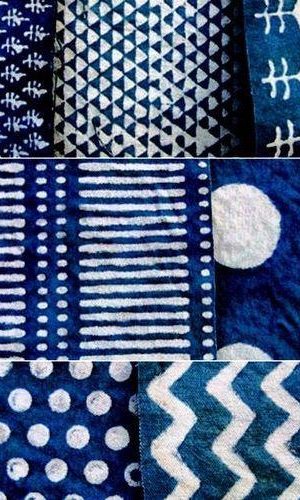
1. Block Carving
Block printers, carvers and dyers are all traditionally part of the Chhippa cast in India. Like most crafts in India the skill of block carving is passed down from father to son. Open fronted shops dotted along the road are filled ceiling high with stacks of wood ready for carving. Chhippas squat at small tables with their traditional tool kit of miniature chisels, hammers and drills and begin carving intricate patterns into the wood.
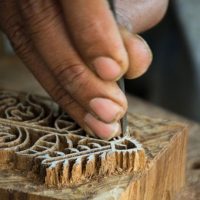
- admin
- January 18, 2022
- 8:23 am
- No Comments
2. Wood Blocks
After each wood block is carved they are soaked in mustard oil for up to a week to ensure the wood doesn’t crack when exposed to the dry conditions of the printing process.Tiny holes are also drilled through each block to ensure that the wood breathes, allowing the blocks to last for decades. Often when you go into printers studios you can find old blocks covered in dust and tucked under the printing tables, dating back 80 years, each holding their own history.
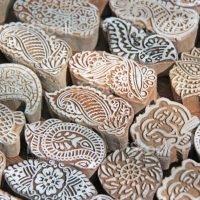
- admin
- January 18, 2022
- 8:23 am
- No Comments
3. Mud Paste
Dabu is a smooth paste, which combines well sieved and soaked black earth, tree gum and a powder from wheat grains. The printer gently pats the wood block onto the dabu paste then quickly stamps it onto the fabric. This paste acts as a resist during the dyeing process.
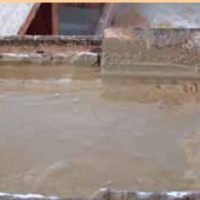
- admin
- January 18, 2022
- 8:23 am
- No Comments
4. Block Printing
The surface used for printing is a saree length table (approx 6 meters) that is padded with many layers of cloth. The printer aligns the first block to the bottom left corner of the fabric and with incredibly precise hand eye coordination, that has been developed over years of block printing, gives a sharp tap the release the dabu paste onto the cloth. This same process is repeated along the length and width of the fabric.
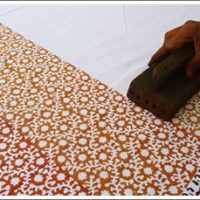
- admin
- January 18, 2022
- 8:23 am
- No Comments
5. Dusting
A fine saw dust is scattered over the wet daub paste once it has been printed to prevent the design from smudging and seals the printed portion from the subsequent dyeing process.
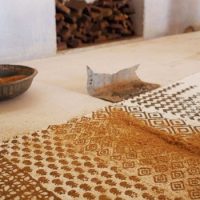
- admin
- January 18, 2022
- 8:23 am
- No Comments
6. Indigo Dying
The dabu printed cloth is next immersed in the deep vat of indigo dye. Natural indigo, from the indigo plant indigofera tinctoria, is not water soluble. It is purchased in blocks, ground into a powder and soaked before fermenting in an underground vat containing a strong alkaline lime powder and water. The strong alkaline reduces the indigo dye, removing oxygen from the liquid and so making the colour chemically available to bond to the cloth. When the cloth is removed from the vat it is green in colour, though as it comes into contact with the air (oxygen) the cloth develops into a rich blue tone. The cloth is dipped repeatedly into the indigo vat to achieve darker shades of blue, drying thoroughly between each successive immersion.
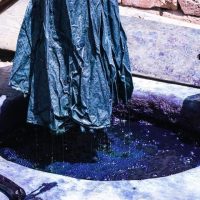
- admin
- January 18, 2022
- 8:23 am
- No Comments
7. Drying Fields
After the fabric has achieved the right shade of blue, the cloth is stretched out in the sun to dry. In Bagru you can often stumble across large fields in the desert that are covered with fabric, appearing like a giant patchwork quilt or one of Christo’s latest installations.
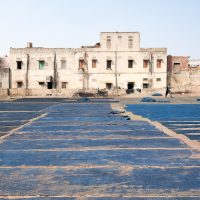
- admin
- January 18, 2022
- 8:23 am
- No Comments
8. Wash Baths
Washing occurs at the start and end of the printing process. The fabric is first soaked in large outdoor water baths for up to a few days to remove any starch, oil, dust and any other impurities. Once all printing and dyeing procedures are completed, the cloth is once again subjected to washing and beating in the baths to remove all traces of the dabu mud, revealing the resist area to be the original white.
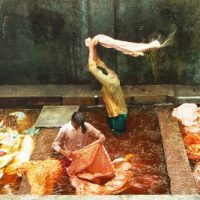
- admin
- January 18, 2022
- 8:23 am
- No Comments
Final Result – Indigo Fabrics
Dabu is a smooth paste, which combines well sieved and soaked black earth, tree gum and a powder from wheat grains. The printer gently pats the wood block onto the dabu paste then quickly stamps it onto the fabric. This paste acts as a resist during the dyeing process.
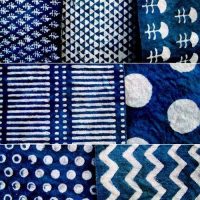
- admin
- January 18, 2022
- 8:23 am
- No Comments


